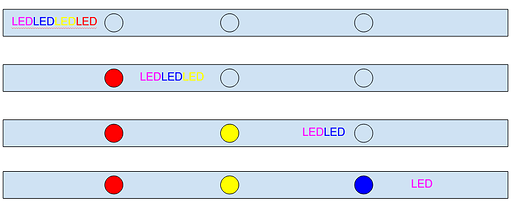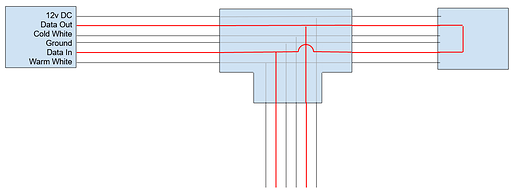It is theoretically possible to build such a splitter, but I have not tested it myself (and I dont know if Inovelli has any plans to create one at this time)
Here is how the LEDs are controlled:
- Controller sends a stream of data for all pixels down the “Data Out” wire.
- The first pixel takes the first set of instructions, sets the color, and sends the REMAINDER of the instructions to the next pixel
- The next pixel takes the first set of instructions (which was originally the second set), sets the color, and sends the remainder to the next pixel.
- Process continues until the data stream stops or it hits the end of the line.
- The end cap routes any leftover commands on the “Data Out” back down the “Data In” wire.
- When using the provided T connector, information travels like this (red lines represent the data wires)
- In order to split the signal and get 2 simultaneous runs, you would need to have a splitter that works like this:
- When using a custom splitter like this (which I have not personally tested but should theoretically work), you only need 1 end connector, and it should be on the leg with the most LED pixels on it. If both legs are the same, it can go on either one.


